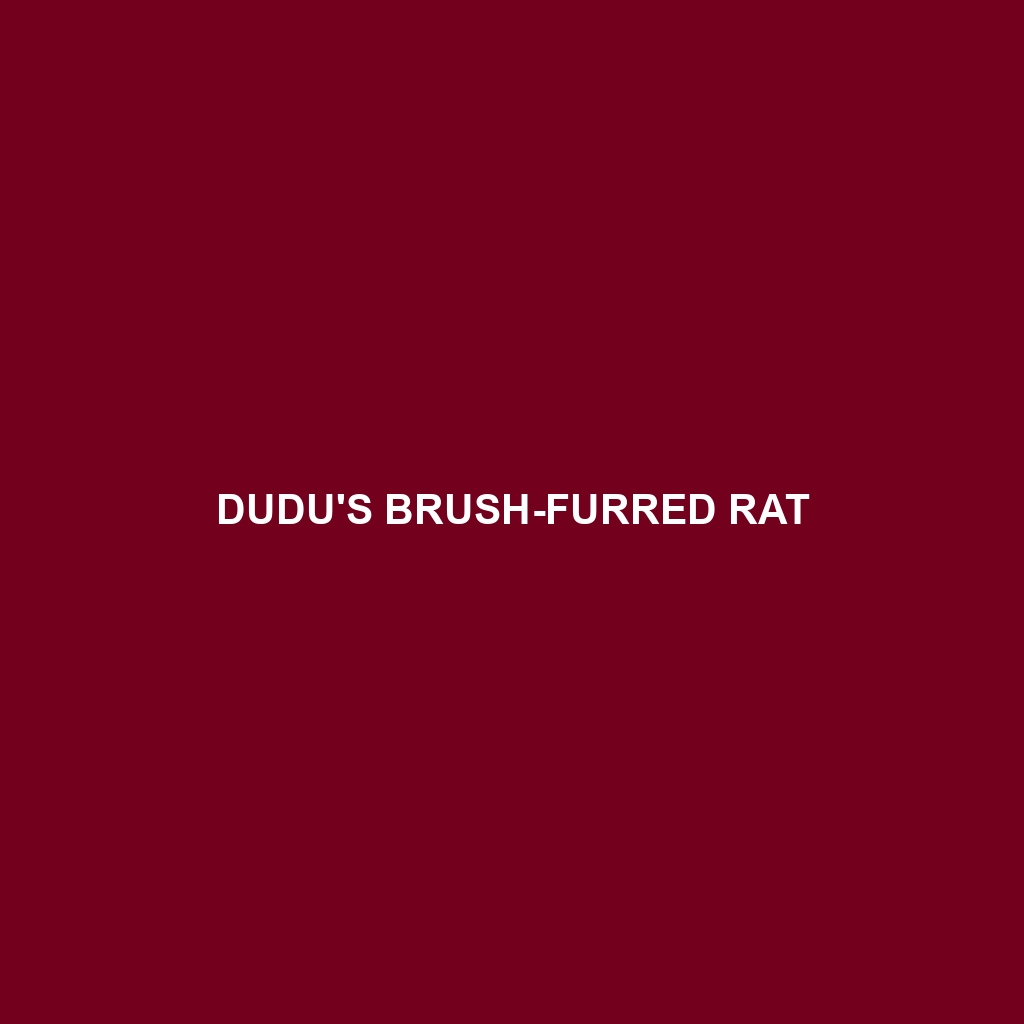Dudu’s Brush-furred Rat
Common Name: Dudu’s Brush-furred Rat
Scientific Name:
Habitat:
Dudu’s Brush-furred Rat is primarily found in the lush rainforests of Central Africa, particularly in regions of the Congo Basin. These rodents thrive in humid, dense forest environments where they can readily access cover and food sources. They are often located near streams and areas with rich undergrowth, enhancing their survival by providing shelter and foraging opportunities.
Physical Characteristics:
This species typically weighs between 200 to 300 grams and measures around 30 to 40 cm in length, including a long, hairy tail. Dudu’s Brush-furred Rat showcases a dense, soft fur that is primarily a mix of brown and gray hues, allowing it to blend seamlessly into its forest habitat. Notable features include large, rounded ears and bright, expressive eyes that enhance its sensory capabilities, making it adept at avoiding predators.
Behavior:
Dudu’s Brush-furred Rat exhibits a primarily nocturnal lifestyle. During the night, they are active foragers, utilizing their excellent sense of smell to locate food. They are also known for their social structures, often living in small family groups. Their elaborate nests, built from leaves and twigs, are strategically placed in tree hollows or under thick foliage to provide safety from terrestrial predators.
Diet:
As omnivores, Dudu’s Brush-furred Rats have a diverse diet that primarily consists of fruits, seeds, and plant material. They are also known to consume insects and small invertebrates, contributing to their nutritional needs. This varied diet allows them to adapt to changes in food availability throughout the seasons, making them resilient in their forest environments.
Reproduction:
The breeding season for Dudu’s Brush-furred Rat typically occurs during the rainy months, peaking around mid-year. Females give birth to litters of 2 to 6 offspring, which are weaned after about four weeks. Parental care is prominent, with both male and female engaging in nurturing behaviors. Young rats mature quickly, becoming independent by three months.
Conservation Status:
According to the IUCN Red List, Dudu’s Brush-furred Rat is currently classified as vulnerable due to habitat loss from deforestation and human encroachment. Conservation efforts are crucial to safeguard their habitats and mitigate the impacts of environmental changes on their populations.
Interesting Facts:
One fascinating aspect of Dudu’s Brush-furred Rat is their ability to climb trees, which is unusual for most rat species. They have adapted well to arboreal life, often seen foraging for food in trees and shrubs. Additionally, this species plays a vital role in seed dispersal, aiding in forest regeneration.
Role in Ecosystem:
Dudu’s Brush-furred Rat serves an important role in its ecosystem as both a prey and a seed disperser. By foraging on various plants and fruits, they aid in the growth of new vegetation, contributing to the health and diversity of their forest habitat. Additionally, they serve as a food source for a variety of predators, thereby maintaining the balance within their ecological community.
